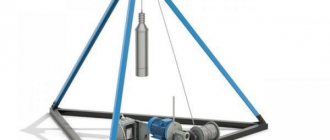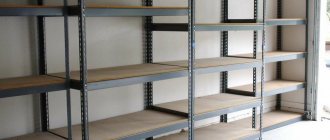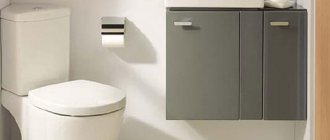Work specifics
The physical properties of the material largely determine the features of working with copper. Due to plasticity, the workpiece at the bend may decrease in diameter or even break. But you can deform a copper pipe manually. Methods for increasing bending strength will be described later.
The second feature of copper pipes is the need to heat them to effect deformation. Of course, it’s easy to handle thin-walled workpieces without a soldering iron or a gas torch, but it’s better to heat thicker elements (where there will be a bend) to make your work easier.
The third feature of bending copper pipes at home is the mandatory use of compensating elements. This is necessary to minimize the appearance of “corrugations” (waviness) on the inner wall of the tube. Examples would be sand, a steel spring, sometimes ice. Now let's look at the known methods of how to bend a copper tube at home.
Main advantages of hydraulic manual pipe benders
A hydraulic pipe bender bends pipes using high pressure at one (manual machines) or several points (electric models). The most common type of device is a hydraulic crossbow pipe bender.
Hydraulic hand-held devices have many advantages compared to other types. Their main advantages include:
- compactness;
- cheapness;
- reliability;
- ease of use;
- mobility;
- accuracy;
- high bending speed;
- no additional energy costs.
Hydraulically driven pipe benders, unlike conventional manual devices, have higher efficiency and can perform fairly large volumes of work. In addition, they are not stationary, which allows them to be used in the right place. Due to the fact that the design of such a device is much simpler than that of its electrical counterparts, they are much less likely to break down. This is also a huge plus.
Bending methods
Methods for giving a curved shape to a copper pipe are divided into two categories:
Industrial flexible tube bending refers to the use of special equipment - pipe benders. The most common are hydraulic and mechanical (manual). The former make it possible to minimize human physical effort, have replaceable nozzles for selecting a suitable bending diameter, and are used for large copper tubes. The latter are compact, work using human muscle power, and also have replaceable attachments in the form of a semicircle.
When repairing or installing copper pipelines, you don’t always have a pipe bender at hand. Therefore, users make do with improvised means.
Hydraulic lubricant
Each device that includes moving elements needs lubrication. To carry out the working process of a hydraulic pipe bender, you need special oil. This oil must have the following characteristics:
- Oil cleanliness during temperature changes. It must have sufficient transparency and not have a tendency to form sediment at low and high temperatures.
- Hydrolytic stability. If water gets on a hydraulic pipe bender, the oil should ensure the functionality of the mechanism and protect it from rusting.
- Filtration qualities. The oil should not have a too thick consistency in order to pass freely through the cleaning filters.
To maintain a pipe bender you need to use high-quality products
Compliance with the above requirements helps protect hydraulic equipment and extend its service life. Hydraulic lubrication is a necessary part of any moving mechanism. Without it, the operation of such equipment is simply impossible. In addition to its protective properties, lubricant can reduce physical stress when bending pipes.
Household methods for bending copper pipes
These methods are distinguished by their applicability in a limited space, that is, in an ordinary apartment. There is no need for large equipment; bending a copper blank will not be much slower. Among the methods for bending copper tubes are:
- Spring-loaded. Allows you to bend a metal pipe at any angle. A spring is used, the length of which is equal to the length of the pipe. When bending forms of large diameter, it is placed inside the workpiece so that it rests against the walls; smaller diameter - worn externally. If it is necessary to deform a small section of the product, the spring is pushed to the place of the intended bend.
How is copper pipe bending done using a spring? The sequence of actions is as follows:
- place the spring outside/inside the tube;
- warm up the bend (or the entire pipe) with a blowtorch or gas torch;
- when the surface changes color to a darker one, begin bending;
- After deformation, leave the workpiece until it cools completely under natural conditions;
- remove the spring.
To get the product of the desired shape, you can use round metal objects as templates (for example, car rims, other pipes, etc.).
- Sand. Here again you will need a heating element and clean, sifted, completely dry sand. The sequence is:
- one of the ends of the copper pipe is clogged with a wooden plug (a wooden or rubber hammer is used!);
- the pipe cavity is filled with sand, while the workpiece is periodically tapped with a wooden plug on the surface (table, floor);
- Having filled the product completely, put on the same plug at the other end;
- apply a blowtorch or gas torch to the intended bend of the pipe, rotating the workpiece to ensure uniform heating;
- press one end of the pipe to the support, and carefully bend the other in the desired direction;
- Allow the deformed part to cool (in natural conditions or douse with water).
The good thing about this method is that if the bend of the pipe is uneven, it is permissible to straighten it - tap the place where the deformation has gone bad with a hammer. After the tube has cooled, the plugs are removed from it, sand is poured out, washed and used for its intended purpose.
If bending is performed in winter, it is possible to fill the internal cavity with ice. However, this is undesirable - when bent, it may break, and the fragments will damage the inner surface of the tube. Although, if the latter does not have special requirements, it is worth adopting the method.
Make your own crossbow pipe bender with a punch
They are called pipe bending machines because of their similarity with a type of weapon such as a crossbow. Only instead of arrows, a hydraulic jack is used, acting on the profile or pipe, bending them. To construct a crossbow-type pipe bending machine, you will need to use a welding machine. To implement the idea you will need to perform the following steps:
- A frame of a cone-shaped design is manufactured. For this, corners, channels, profiles, etc. are used.
- Two steel plates are connected using movable rollers, through which the part is bent
- Inside between the rollers there is a jack on which a C-shaped shoe or punch is placed
- The shoe must have grooves to prevent the tube or profile from slipping
This is interesting!
You can buy a punch or make it yourself.
For manufacturing, you will need a tube from which the seat for the material to be bent is made. It is recommended to use such pipe benders for bending pipes, since other shapes of products will simply be deformed using such a machine. It is not difficult to make such a device, but you will need a hydraulic jack for this.
The video below shows how to make a crossbow pipe bender on your own.
https://youtube.com/watch?v=YoG0d5OqeCc%3F
Complicated bending of copper pipes
It happens that you need to bend a workpiece of a non-standard profile. For example, not round, but square. The spring method is not applicable here. All that remains is to use sand, a mallet, plugs and two supports. A pipe is placed on the latter, then heated, then the bend is tapped with a hammer until it is given the proper shape.
What to do if you need to bend the tube into a spiral? It's simple - you just need to find a cylindrical template with a diameter equal to the required one. The copper workpiece is slightly heated, then bent. This will create an even spiral.
Popular pipe bending equipment
Roller pipe benders
brings to your attention Profline roller pipe benders. Literally every model of a Profline roller pipe bender (and this manufacturer produces a wide range of three-roller bending machines with different performance characteristics and sets of functions) can serve as a standard for the quality and reliability of roller bending equipment in its price class.
Megapolis is the official representative of Profline in Ukraine and can offer you hydraulic equipment of this brand at the most attractive prices.
Mandrel pipe benders
Mandrel pipe benders semi-automatically perform the bending operation, moving the mandrel forward or backward, and clamping the pipe in the carriage chuck. All other operations with semi-automatic mandrel pipe benders are supposed to be performed manually.
Automatic mandrel pipe benders have the following main parameters in their evaluation: the technical ability of the pipe bender to produce products in automatic mode and, of course, the degree of convenience of working on the machine for the operator, because the productivity of the machine and the percentage of defects at the output largely depend on it.
The automatic mandrel pipe bender performs all operations of bending, feeding and turning the pipe in space according to a given program. This means that to manufacture products for which the production process was already programmed, you just need to select the program from the computer's memory and run it again. The productivity of automatic pipe bending machines is much higher than semi-automatic ones. In addition, the risk factor for the life and health of workers, as well as the possibility of human error, are significantly reduced. Therefore, more and more customers in Ukraine are choosing automatic pipe bending machines.
In both cases, the mandrel for bending pipes must be chosen exclusively correctly, because the quality of bending largely depends on it.
A modern automatic pipe bender with a mandrel is high-tech equipment, characterized by functionality, reliability, and high quality of material processing. This is an excellent solution for equipping your enterprise. The main advantages of mandrel automatic and semi-automatic machines:
- ease of use;
- excellent quality of manufactured products;
- stability and reliability.
Mandrelless pipe benders
Mandrelless pipe bending machines are the optimal choice for working with thick-walled pipes and other rolled metal products. The relatively low cost allows them to be used not only in large industries, but also in small workshops. Microprocessor control and programming capabilities ensure repeatability and stability of product quality. Modern mandrelless machines use only the highest quality materials and components, which ensures ease of maintenance and long service life without repairs. There are powerful machines on sale that can work with pipes with a diameter of up to 130mm.
Bending machines without the use of a mandrel are ideal for bending reinforcement, rods and pipes of various sections. Manual hydraulic pipe benders allow you to solve problems with working with metal-plastic pipes at minimal cost.
A hydraulic pipe bender will significantly increase your capabilities; a powerful jack maximizes the impact on the pipe at the bend. Using a hydraulic pipe bender for metal-plastic pipes, you will get an even pipe bend. The hydraulic pipe bender for metal-plastic pipes offered by Megapolis is indispensable if you need reliability and durability.
Some useful tips
There are several ways to obtain bent copper pipe. Each is good in its own way, but there are points that are always important to take into account, regardless of the chosen deformation method.
- The main requirement for the user when working is accuracy and attentiveness. Sudden movements will lead to excessive deformation of the pipe walls and their complete rupture.
- Parts made of annealed copper are the easiest to bend, so heating them takes a minimum of time.
- If the bend is not made where needed, you can reheat the workpiece and bend the product back. However, no one guarantees that the shape of the tube will be the same.
- If the surface overheats, the metal may simply begin to melt. It is unacceptable. The user must carefully follow the process from start to finish.
What types of devices are there for transforming pipes?
Transforming the curvature of a thin-walled pipe of small diameter is a completely accessible stage in obtaining metal blanks for frame-type structures.
It is enough to look at the drawings and photos of pipe benders, and it will become obvious that structurally they have a lot in common:
- base (support, emphasis);
- frame or frame (open or closed);
- strips, pipe stops or holders;
- screws or vice for fastening;
- injection, mechanical or operating device (alternative power part).
The forming of aluminum, standard steel and metal-plastic pipes can be done using the simplest manual template-type device.
Most pipe benders resemble a compact machine, but they have their own classification:
- by type of impact on pipes (running, winding, drawing, rolling);
- moving if possible (stationary and portable).
The drive type is also different:
- electric;
- manual;
- hydraulic;
- electrohydraulic.
If you use an electric drive or a hydraulic jack, it will take on the entire power load, saving time and effort. But its construction requires at least basic knowledge and experience in constructing household machines for metal processing. But such devices are several times cheaper than ready-made devices and their repeated rental.
The most popular and simplest in design are manual pipe benders of the template type. By bending around a profile or regular pipe along part of its circumference, a section of pipe is transformed at a given angle or the required curvature.
Advantages of copper pipes
Copper pipes are widely used in almost all areas of our activities.
The advantages arise from the characteristics of the metal:
- use for drinking water supply due to bactericidal properties;
- can withstand physical factors (impacts, bends);
- with low service costs and installations have a long service life;
- low cost, which entails cost savings;
- easy to process and install;
- the presence in the retail chain of a huge selection of equipment for copper products, which makes their installation easy;
- absence of any deposits on the metal walls;
- wide temperature range from -200 to +200 degrees, no deformation when changing temperatures;
- good anti-corrosion properties.
Take note: copper pipes have decorative properties and look good in any interior.
Blacksmith ETB40-50HV
This is a stationary device. It operates from a three-phase network. Power consumption is 1.1 kW. The base is heavy, cast. The total weight of the structure can reach 250 kg. There are two drive shafts and an adjustable mandrel, so this tool can work with square pipes up to 20x20 mm in size. You can also purchase mandrels to work with workpieces up to 40 mm.
Control is convenient using pedals. Since the machine is vertical, it will be convenient for the operator to work with the product for a long time.
Here are the main advantages of this tool:
- High performance.
- Universal use.
- Foot control.
- Vertical arrangement.
- The presence of two emergency buttons for immediate shutdown.
Methods for bending copper pipes
Pipe bending can be carried out in different rooms, in which there may or may not be enough space for work. In order to make work possible in any environment, various pipe benders are produced.
Spring pipe bender
The design of this type of pipe bender is elementary. It is a durable spring made from high quality spring steel with tight coils. On one side the spring is slightly wider than on the other (to make it easier to put on and take off).
The operating principle is very simple. The spring and copper tube must match each other in diameter. The spring, due to its shape and material, will prevent the tube from breaking or becoming deformed. Using a wide hole, the spring is placed on a copper tube and advanced to the bend. You need to take the spring by the edges with your hands and bend it to the required state. After bending, remove the spring from the copper tube from the edge through which it was put on.
- small weight;
- simple device;
- ease of use in any space limitation.
- bending due to direct physical force;
- high probability of error when choosing the bending angle (overbending or underbending);
- pulling to the bend along the pipe, which is very inconvenient when the bend is far from the edge;
- For different diameters of copper pipes, it is necessary to have a suitable spring.
Mechanical pipe benders
This type of pipe bender greatly simplifies bending work. They increase the force applied by the worker and have a fairly accurate bend angle. Divided into:
- Segmental pipe bender. Looks like a small machine. It can bend pipes with a diameter of up to 42 mm. The largest bend angle is 180 degrees. It is equipped with interchangeable stops for various pipes. The tube is inserted between the roller and the segment to which it is attached. The segment looks like half a disk. Rotating the handle causes the segment to move. Rotating, it tightens the tube around its own body and bends it to the required angle.
Crossbow type pipe bender
A lever pipe bender has two levers. On one there is a shoe, on the second there is a bending template. The template and shoe have markings along which the pipe is bent to the required angle. The pipe bender handles are positioned in different directions, the pipe is placed in the bending template and secured. The lever with the shoe is placed on the tube, while the zero mark on the shoe and the template are aligned. After this, the tube is bent using levers. Bending to the required angle must be done slowly. After bending, the tube is removed.
Advantages of lever pipe benders:
- small physical loads on levers;
- bend pipes at a clearly defined angle within 180 degrees;
- light weight;
- aesthetic appearance of the pipe after bending.
- each pipe diameter requires its own lever tool;
- cannot be used for large diameter pipes.
Manual pipe bender
Manual pipe benders are, in most cases, manual devices that can be used to bend pipes with a diameter of 5 to 125 mm.
Bending of a copper pipe occurs using a special manual mandrel pipe with a set bend radius. This mandrel can be inserted either inside the tube or pulled from the outside. By applying physical force when pulling the mandrel, the copper tube is given the desired bend shape. Most often, the mandrel is made of steel. To make it easier to pull out the inner part after bending, tie a wire to it.
This is interesting: Do-it-yourself universal manual pipe bender: manufacturing recommendations and photos
The main advantage is its low cost, but at the same time quite effective. The main disadvantage is the large physical effort that must be applied to bend the pipes.
Hydraulic pipe benders
They are very similar to mechanical crossbows. The difference is that by moving the lever, the hydraulic system does all the work. They can bend pipes from 10 to 50 mm in diameter. The largest bend angle is 90 degrees. The set of such a pipe bender includes different segments for bending, which can be changed for pipes of different diameters.
Manufacturing of rollers
To make rollers, you should look for reliable materials that have already passed the strength test. Some use rotors from electric motors of old washing machines or kingpins from a KamAZ vehicle, others use carbon steel circles. In fact, there are many options, the main thing is not to forget that the chosen material must be strong enough. User Dva11, for example, used wheel hubs from an old sprinkler installation.
Dva11 FORUMHOUSE user
Hub diameter – 75 mm, length – 110 mm, bearings were selected according to the hub (205 fit). I had to buy 5 bearings and 1 pulley, and made the rest of the parts from scrap metal.
Smooth cylindrical shafts are a universal option. They are used to bend pipes of various sections. If the profile of the shafts is brought into line with the profile of the pipes being bent, the quality of bending will noticeably improve.
You can also use blanks designed for different profiles of bent workpieces.
Ideally, removable nozzles or ring clamps (limiters) are installed on the shafts, with the help of which the profile of the rollers is adjusted to the width of the pipe.
rusi45 FORUMHOUSE user
I made some improvements to the design of the rollers: I made attachments for the pipe on the outer shafts, where the stops are located. Tests were carried out on a 1 inch pipe. The attachments are easy to replace. To do this, I made one side of the bearings sliding. The nozzle is made of steel 65G (plus hardening). There is virtually no wear, and the file does not take hardness.
The internal radius of the roller or nozzle for a round pipe should be made with a margin: the radius of the pipe plus 1-2 mm. For example, if the pipe diameter is 24 mm, then the internal radius of the roller will be 13-14 mm. Only in this case the pipe will not jam during rolling.
This is the size we are talking about.
If a pressure roller designed for bending rectangular pipes has a slight convexity in the middle, this will help maintain the geometry of the profile being bent. The roller will press the upper wall of the pipe inward, preventing the workpiece from spreading out to the sides.
Making a pipe bender with your own hands
In order to make a pipe bender with your own hands, you need to create its base. The basis of the future pipe bender will be a tube with a rectangular cross-section of walls. It must be thick enough to withstand a load with a wall thickness of at least 3 millimeters.
From the edge of this tube, at a distance of 2-3 cm from the edge, it is necessary to make a hole, the size of which should be equal to the size of the axis of the main pulley (it will be used for bending pipes).
Next, you need to mark the largest bend radius that your pipe bender makes and add 5 cm. Having measured this length, cut off the excess part of the tube. The tube stop looks like a pin with a nut on one side and a T-shaped stop on the other.
Having finished with the base, you need to make a pipe bender handle. To do this, you need to have two iron plates with a thickness of 4 mm. The handle will subsequently be attached to the axis of the base, so the width of the plates should be the same as the diameter of the axis. To be sure, leave a distance of 5-10 mm on each side. To make the handle stronger, these plates can be welded together in several places.
Now you can assemble the entire device. Clamp the base of the pipe bender with a vice. Place the handle plates and pulley one after the other on the base axis. Screw the stopper pin into the nut on the base. The homemade pipe bender is ready.
For a comparison of crossbow and spring pipe benders for copper pipes, watch the video:
See inaccuracies, incomplete or incorrect information? Do you know how to make an article better?
Would you like to suggest photos on the topic for publication?
Please help us make the site better! Leave a message and your contacts in the comments - we will contact you and together we will make the publication better!
Operating principle of a pipe bender for a profile pipe
As a reference example of a manual pipe bender, we chose the Russian-made BendMax-200 and BendMax-300 models.
Craftsmen bend greenhouses, canopies and arches on them. Both professionals and amateurs work with these pipe benders.
The first stage is setting up the pipe bender
Using the pressure screw and support rollers, the desired radius of the future arc is set.
BendMax-300 manual pipe bender with three mounting positions for support rollers.
To set the bend radius, adjust the support rollers. Rearrange them manually, no special tool needed.
! The rollers are equipped with a closed bearing, which extends their service life.
The second stage is pressing the workpiece
Once the rollers are adjusted, insert the profile. The clamping screw rotates effortlessly, lower it and secure the workpiece.
Press the workpiece: tighten the top screw and fix the limit nut.
! During bending, the workpiece will not slip, because there is a notch on the screw.
The third stage is bending the arc
To bend the arc, rotate the handle. The workpiece is bent along a given radius.
Bending occurs effortlessly.
A ruler and a limit nut are needed for rapid mass production of arcs.
To make an identical arc, lock the limit nut or make a mark on a ruler.
Video
Reviews and comments
Those who always ask to find information related to repairs are our dads. I found this site for my dad. We used to have a manual pipe bender - it’s cheap, but you have to make such incredible efforts. Just awful. Judging by reviews on the Internet, hydraulic tools are more convenient. Tell me how to handle it correctly? I would like to know more information about the nuances of the work. Thank you.
If you need to bend a tube made of copper, it is better not to try to do this without special tools, as the result may be disastrous. One of the devices that allows you to perform this procedure as efficiently as possible is a pipe bender for copper pipes. Such pipe benders, presented in various models on the modern market, are successfully used to create communications from copper pipes - water pipes, air conditioning systems, etc.
It is possible to bend a pipe without defects only with the help of a pipe bender
Where is a hydraulic pipe bender used?
This type of pipe bender has a wide range of applications. However, it is most popular for renovation work. When installing a pipeline, it is an indispensable thing, as it bends pipes at different angles and thanks to this, the desired structural configurations are obtained.
Bending pipes with such a device allows you to obtain reliable bends and not damage the part (for example, if you try to bend a pipe manually, it may simply burst or become deformed so that its further use in the system will be impossible).
When installing pipeline communications made of metal, this device allows you to get a smaller number of seams and connections, which, as a rule, are considered problem areas and may leak in the future. In addition, welding work to connect straight sections with rotating parts requires special equipment and skills. Pipe bending devices are used when installing the following systems:
- heating;
- air conditioning;
- water pipelines;
- gas pipelines.
In addition, the hydraulic apparatus is used to produce various frame structures, fences and other structures of various purposes and scales.
Hydraulic pipe bender can be used on a production scale
Advantages of using copper pipes
The high popularity of copper pipes, which are actively used in many areas, is explained by a number of advantages that distinguish such products.
- Pathogenic bacteria do not develop on the walls of copper pipes, so these products can be successfully used for installing pipelines through which drinking water is supplied to consumers.
- Copper tolerates mechanical loads of various types quite well.
- Copper piping is extremely durable. At the same time, the costs of its installation and maintenance are relatively low.
- Installation work and preparation for it are quite easy.
- For the installation of pipelines made of copper, a large number of components are available on the modern market, so this procedure does not cause any special problems.
- Plaque does not form on the inner walls of copper pipes. This means that the clearance of the pipeline does not decrease and, accordingly, its operational characteristics do not deteriorate.
- The properties of copper make it possible to successfully operate pipes made from this metal in a fairly wide temperature range: from –200° to +200°.
- Due to the presence of a stable oxide film, copper perfectly resists corrosion, so copper products can be successfully used for a long time.
- Copper pipes are highly decorative, which allows them to be used in almost any interior.
4) We determine the specific model and modification of the pipe bending machine based on:
- Available budget
- Pipe bender delivery time
- Pipe bender performance
- Resources consumed by the pipe bender (power supply)
- Consumables consumed by the pipe bender
- Pipe bender service organizations
- Time frame for training personnel to operate a pipe bender
- Foundation requirements for installing a pipe bender
- Pipe bender operating conditions
- Requirements for pipe bender installation supervision and commissioning
- Cost and lead time for custom-made equipment and the possibility of making it yourself
5) Model range of pipe benders produced by Baltic Machine-Building Company LLC. Any copying of this article, in whole or in part, is a violation of the owner’s copyright.
Types of pipe benders
When choosing a pipe bender for copper pipes, you should take into account both the characteristics of the product itself that is to be processed, and the parameters of the desired result. It is worth dwelling in more detail on the design features of each of the most common bending devices for copper pipes.
Spring
The spring pipe bender for copper pipes, despite the simplicity of its design, is highly efficient. The basis of the design of such a device, as its name suggests, is a spring with dense coils, made of high-strength steel. One of the ends of such a spring is expanded to make it more convenient to put it on and also remove it from the tube being processed.
Spring tube benders are used for bending soft copper tubes of small diameter
The principle by which a spring pipe bender works is quite simple and is as follows.
- A spring, the inner diameter of which must correspond to the outer diameter of the copper tube being processed, is put on it with its wide end.
- By means of physical force exerted on the spring, the tube is bent to the required angle.
- After the copper tube is bent, the spring is removed from it through the same end through which it was put on.
Comparison table of characteristics
The table below presents the main characteristics of the pipe bender models under consideration. By comparing them with each other, it will be much easier for you to choose a design that meets your needs and types of work. Yandex
| Model name | Manufacturer country | View | Features of the pipe bender |
| Blacksmith MTB10-40 | Germany | mechanical | reliability of design, functionality and durability |
| STALEX MPB-25S | China | mechanical | ease of use, attractive price, availability for purchase in various construction stores |
| BLACKSMITH MB32-25 | Germany | mechanical | universal pipe bender, has a strong, durable frame |
| Stalex MHPB-1A HHW-1A | China | with hydraulics | the best ratio of pipe bender quality and cost |
| VIRAX 240233 | France | hydraulic | powerful hydraulic machine of all those presented in the rating, decent quality assembly of materials |
| Bison Expert 23522-H7 | Russia-China | electric | ease of use, household design |
| TOR HHW-G76 | Russia | electric | universal machine, suitable for working with different types of pipes |
How to make an effective pipe bender with your own hands
When wondering how to bend copper pipes correctly, it is not at all necessary to purchase a serial device for this: a simple but effective device can be made with your own hands.
Drawing of a handmade homemade pipe bender (click to enlarge)
So, to make a homemade pipe bender, you can do the following.
- The basis of the future device is made from a rectangular metal pipe. A hole is drilled from one edge of the base (at a distance of 2–3 cm from it) into which the axis of the main pulley will be inserted. In addition, another hole must be made in the base pipe into which a T-type stopper will be installed.
- The handles of a homemade pipe bender can be made from metal plates, the thickness of which should be at least 4 mm.
- When all the preparatory steps are completed, the base is clamped in a vice, the axle is inserted into the prepared hole, and the handles of the device and its pulley are fixed on it. The last thing you will need to do is secure the T-shaped stopper in the hole in the base.
Rolling
If we consider pipe benders by degree of evolution, then this type is at the top. This is probably why professionals love to use it so much. Three rotating rollers (sometimes a fourth is added in pair to one of them), gradually changing the pressing force and rolling repeated for each position of the pressing roller - all this ensures the most gentle mode for the pipe. The walls stretch evenly, the profile at each bend section is constant.
The principle of operation is shown in this simple diagram.
There are many examples of implementation. By rolling the pipe in a certain segment and the position of the pressure (middle) roller, the bending radius is adjusted.
The photo below shows the simplest example of a drive (manual), but very attractive in execution.
The frame structure is made of a square pipe; rotating thrust rollers are attached to the side posts on stationary axles. Inside the frame there are paired guides in the form of round pipes along which the pressure roller moves. On the other side of the frame, on the roller axis there is a wheel, due to which the pipe is rolled. The position of the pressure roller is changed using a screw drive.
Using the same scheme, you can make a simpler device.
The principle is the same - execution is easier. The side supports and base are made of sheet metal. The movement of the rod is screw, but additional guides are not needed to move the axis of the pressure roller. Of course, you can’t bend large pipes with it, but it’s suitable for domestic purposes. It has a slight advantage over the first option - the variable position of the support rollers, and therefore a change in the minimum bending radius.
This scheme is also good because the supporting structure can be made of wood. You can leave the roller axes, the handle for rotation and the rod (not to mention the fasteners) as metal. Even the rollers can be made of wood or polymer ones.
These were samples with pipe pulling by rotating the central roller.
You can set the movement with support rollers.
It is easier to design a pipe bender with one roller scrolling, but it has fewer capabilities.
With two rollers rotating simultaneously, the design becomes more complex due to the transmission of rotation between them.
Another example uses the pinch roller tightening from the bottom.
Some believe that this makes it easier to control the work process - the pipe is not “obstructed” by the supporting structure. This model even has two pairs of rollers - for round and profile pipes.
Stationary pipe bender: step-by-step instructions
If you plan to make your own greenhouse from steel pipes, then you will need to acquire not just an ordinary pipe bender, but a reliable product.
After all, with this approach you will need to bend more than a dozen profile pipes. To make the greenhouse design neat and beautiful, you need to use a stationary pipe bender. Before you start making a greenhouse, you need to make sure that you have the appropriate tool for bending profile products. The following elements will be needed to construct a stationary pipe bender:
- rod at 25;
- 6 bearings;
- channel.
You will also need a welding machine, which will be used to connect all the components. Step-by-step instructions for making a stationary pipe bender are as follows:
- Bearings are welded to the base (channel), which are connected to each other by a shaft in the form of a steel pipe of the appropriate diameter.
- To prevent the shaft from being located too close to the base, the bearings should be welded onto 5 cm pieces of rectangular pipe.
- In order to deliberately produce a unit with which the bending radius could be adjusted, the base must be made of two channels connected to each other by curtains, as can be seen in the photo above.
- Two shafts with bearings are located at the same height, and the third (central) is welded using a rectangular tube 15-20 cm higher.
- An additional tube needs to be welded to the upper shaft, to which the handle will be attached. This shaft will be driven by muscular force.
- The handle is welded to the upper shaft, after which the resulting product can be checked for functionality.
When installing a profile tube of any size, you should adjust the radius of the final bend. This can be done using a jack located under the base on which one of the shafts is fixed. Having adjusted the required bending radius, the handle rotates. The result is high-quality curved tubes. The advantage of a pipe bender is the ability to bend materials of any size and diameter.
Among the disadvantages, we can only note the possibility of operation in one place
It is important to understand that such a device can be used for any need. To manufacture such a device, an investment of no more than 500 rubles will be required.
You only need to buy 6 bearings, and all the other elements can be found in every craftsman’s household.
How to choose a pipe bender and what to look for?
All pipe benders are divided into manual, electric and hydraulic. Despite the fact that the principle of their operation is the same, manual ones are suitable only for domestic purposes, while electric and hydraulic ones are used on an industrial scale, as they have increased productivity.
When choosing a tool, pay attention to the following basic characteristics::
- Tool performance . The operating speed of the pipe bender depends on its criterion. If for domestic needs this characteristic does not play a special role, then for a professional tool it plays a key role.
- Type of drive . It can be mechanical or electrical. As in the previous case, mechanical devices are usually used in everyday life, while more efficient electrical ones are used in production and large construction sites.
- Dimensions and installation method . According to this criterion, pipe benders are divided into mobile and stationary. The choice of a tool based on this characteristic directly depends on the user’s goals and the frequency of use of the device.
Also, when choosing a tool, pay attention to the diameter of the pipes with which the tool can work, as well as the ease of setting the optimal bend angle.
Tips for choosing
When choosing a pipe bender, pay attention to several criteria:
- Product type. Mechanical and hydraulic pipe benders are perfect for domestic use, but electric ones will cope with large volumes of work, so they will fit well into production and large spaces.
- Purpose. Decide what materials the pipe bender will work with (pipe diameter, steel and profile, copper products).
- Adjust settings. Thanks to manual control, the pipe bender becomes universal and functional; it will be able to handle different types of work and their varying volumes.
Rating of the TOP 12 best pipe benders of 2021
| Place | Name | Price |
| TOP 4 best pipe benders by price/quality for 2021 | ||
| 1 | BISON EXPERT 23524-1/2 | Find out the price |
| 2 | Kraftool 23504-15 | Find out the price |
| 3 | BISON EXPERT 23524-3/8 | Find out the price |
| 4 | Kraftool EXPERT MINI 23505-1/2 | Find out the price |
| TOP 3 best lever pipe benders | ||
| 1 | BISON EXPERT MINI 23526-10 | Find out the price |
| 2 | Kraftool 23502-H9 | Find out the price |
| 3 | BISON EXPERT 23523-12 | Find out the price |
| TOP 3 best spring pipe benders | ||
| 1 | BISON 23531-10 | Find out the price |
| 2 | BISON MASTER 23531-12 | Find out the price |
| 3 | BISON 23531-18 | Find out the price |
| TOP 2 best crossbow pipe benders | ||
| 1 | Kraftool 23501-H6 | Find out the price |
| 2 | BISON 23521-H6 | Find out the price |
Reviews about which pipe bender is best to buy for your home
Petrov Ilya Nikolaevich, 42 years old, Perm
I am interested in artistic forging; I often need to carefully bend metal profiles and ordinary pipes. I use the Blacksmith MTB10-40, the purchase cost a small amount, and the device copes well with its tasks. You need to operate the machine manually, but with some experience and strength this does not become a problem.
Listyev Anton Sergeevich, 38 years old, Tyumen
I use a Rothenberger Minibend pipe bender, a very simple and convenient tool for bending pipes. It doesn’t work with large diameters, but I don’t need huge power for home purposes. I use the device only for minor repairs, I’m happy with everything, the bending of the pipes turns out neat, and I only spend a couple of minutes.
Distance from the crimping point to the bend
Brake pipe designs typically have short distances from the start of the pipe to the first bend and from the final bend to the end of the pipe. This is eliminated by manufacturing special sliding shoe inserts, special rollers and clamps, as well as collets of a special design adapted to a specific brake pipe.
Pipe bending machines made in Russia, best suited for bending brake pipes:
- Automatic three-axis pipe bender CE-30 PARTNER.3Х
- Semi-automatic pipe bending machine 3-axis CE-30 PARTNER
- Manual pipe bender for brake pipes 3-axis CM-30/3 PARTNER
- Automatic three-axis pipe bender CE-51 MASTER.3Х
- Semi-automatic pipe bender 3-axis CE-51 MASTER











